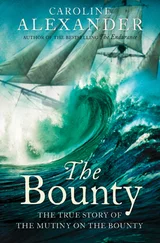So, starting in the sixties the navy became the branch of the military to join, and it attracted a lot of very bright, very ambitious young men into the academies. Which was a great deal. Civilians entering the trades, such as engineering or medicine, would have to work until they were sixty-five before retiring. But naval officers could retire after only twenty-five years of service—which included the five years they spent in the academies. It meant a naval officer could retire around age forty-four or forty-five, a full twenty years earlier than his civilian counterpart. But since the navy was expanding at such a rapid rate, it also relaxed many of the usual Soviet restrictions, such as not admitting Jews to the inner circle. This was exactly Boris Gindin’s ticket, though when he signed up he didn’t realize how difficult the work would be, nor how it would end for him and the rest of the Storozhevoy’s crew.
Once Soviet ships were able to deploy to every part of the world, Groshkov’s next job was to establish its missions beyond the vague but important notion of protecting the Rodina. In the good admiral’s mind there were four basic missions that his navy would have to carry out.
The first and most important was deterrence. Using the fleet, especially its ballistic missile submarines lying just off the U.S. coast, to threaten an all-out attack with no notice and no hope to defend against, the navy was an important tool for preventing a global thermonuclear war from ever happening. Of course Western analysts put a different spin on the issue, looking at the massive Typhoon-class missile subs as offensive, first-strike weapons. It was the same view the Soviets maintained when it came to the U.S. Ohio-class SSBMs.
The second mission was power projection, which the U.S. Marine Corps is so good at. The United States fields 180,000 marines, while the Soviet Naval Infantry only has 12,000 troops. But Gorshkov saw to it that there would be at least one naval infantry regiment in each fleet. It was a start.
The third and fourth missions, for which the Storozhevoy was built and his captain and crew were trained, were sea control and sea presence. In the first, Gorshkov wanted to avoid a war with the West, but if one did happen he wanted the Soviet Union to win. In order to ensure victory he built multi-purpose ships that could launch torpedoes to kill submarines, lay mines to stop surface ships, and fire missiles that could take out both subs and carrier battle groups as well as knock down airplanes. It’s why the Storozhevoy and ships like him carried so many weapons systems and were deployed to every ocean on the planet. Wherever the Americans and their allies planned to deploy their subs and ships and aircraft, the Soviet navy planned to be there waiting for them.
The last mission, that of sea presence, came to Gorshkov via Teddy Roosevelt, who’d promised to “speak softly and carry a big stick.” The idea, according to the admiral, was to send his ships—warships and merchant ships alike—to any nation that would have them. During their visits, which generally coincided with some significant military event or holiday, the navy crews would be sent ashore to organize sporting or musical events. Sometimes their officers would be sent on missions to visit with local dignitaries and their families. In Admiral Gorshkov’s own words:
Friendly visits by Soviet seamen offer the opportunity to the people of the countries visited to see for themselves the creativity of the socialist principles in our country, the genuine parity of the people of the Soviet Union and their high cultural level. In our ships they see the achievements of Soviet science, technology and industry. Soviet mariners, from rating to admiral, bring to the people of other countries the truth about our socialist country, our Soviet ideology and culture, and our Soviet way of life.
The admiral, it seemed, bought the Soviet dogma, hook, line, and sinker.
11. TO THE MIDSHIPMEN’S DINING ROOM
Even the finest, most technologically advanced warship, equipped with the most sophisticated deadly weapons systems known to man, is nothing more than a well-crafted hunk of metal, plastic, glass, and rubber without a crew. Soviet officers are just about the same as the officers in any other modern navy. They’re volunteers and pretty well motivated to do their best. Gindin is typical of this class of sailor; he worked very hard to get himself qualified to be selected for a naval academy. And when he got to school he worked ten times as hard to make the grade. For a lot of guys like Gindin, failure is never an option. It’s a mind-set that is about to be severely tested this early evening of November 8.
Once a Soviet officer candidate qualifies for training at a specific school he is sent to either a technical institute, like Gindin’s St. Petersburg Military Engineering Academy, or a surface warfare school, such as Potulniy and Sablin’s Frunze Academy, the most famous of them all in the Soviet Union, very much akin to Annapolis in the United States. As soon as the officer candidate finishes his primary training he’s sent out into the fleet to stand watches and learn the responsibilities of his division. That’s four hours on, four hours of standby, and four hours off, twice in each twenty-four-hour period. But it’s not that easy. Besides learning how to do his own job, the young officer must be a shepherd to his enlisted crew 24/7. That means teaching them the technicalities of each of their jobs and their shipboard responsibilities and duties, such as calisthenics every morning, and giving them their ideological training—the Party doctrine.
On the one hand, if an officer wants to rise to a command position, such as the captain of his own ship, he must master every aspect of every vessel he serves on, learning one or more new jobs each time he goes out on rotation. At the end, when he is finally picked to run his own ship, he first has to serve as an executive officer, starpom, and if he survives that duty he is given a series of very rigorous ship-handling tests that are designed to flunk out all but the very best candidates. The Soviet navy does not want to promote average officers.
At least that’s the theory.
On the other hand, if enlisted crewmen mostly come from the smaller towns and farms, they’re drafted for a three-year term, and except for about twenty-two weeks of shoreside basic training they learn all their skills aboard ship at sea, where just about every minute of their time is rigidly planned. If they aren’t in their cubricks tending to their uniforms or sleeping, they are supposed to be in training, working, or listening to political lectures. Stuff like hanging out for a smoke and a chat with friends, maybe playing a game of cards or lingering over a cup of tea, is strongly discouraged, though these boys are sometimes pretty inventive and every now and then they do find the time for a diversion, the main purpose of which is to get out of work.
Most of them are eighteen or nineteen when they come out to the fleet and are country bumpkins or unsophisticated rustics, what are called muzhiks. And most of them are ignorant, because they’ve grown up in households with no access to television. They know nothing about life in their own country, let alone the outside world. They are naive kids, prostofiljas, and that includes an almost total lack of knowledge about sex. There is no such thing as sex education in Russian schools, nor is the subject ever discussed by parents. Such a thing is simply too embarrassing.
One day a senior sailor from BCH-3 hands a bucket to one of the younger kids and tells him that he has to climb the ladder to the top of the crow’s nest, what is called the observation bridge, remove the uterus up there, put it in the bucket, and bring it back. The kid doesn’t have a clue what the hell a uterus might be, it’s enough that a senior sailor has given him a job to do, and he’ll be damned if he’ll admit he doesn’t know.
Читать дальше












